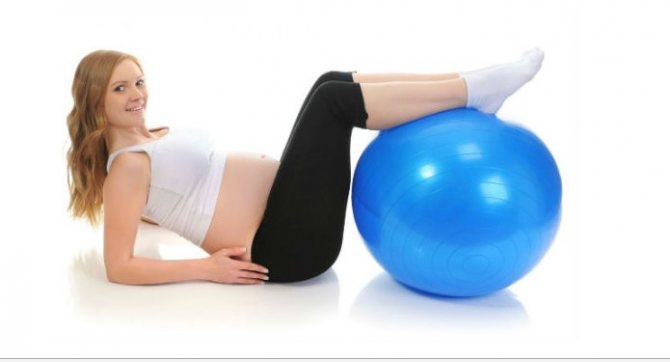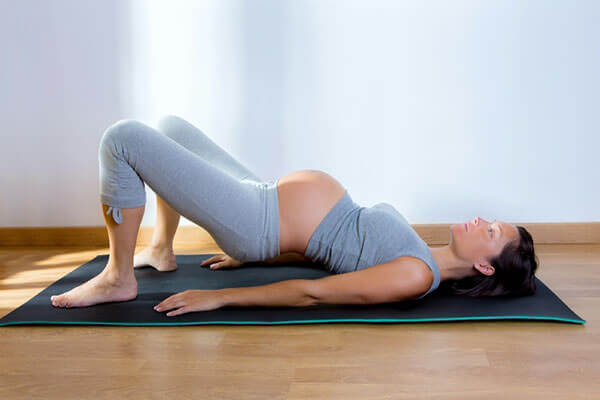Pregnancy is a crucial period in a woman’s life, during which it is very important to take care of her own health. Walking in the fresh air, swimming, moderate physical activity, balanced nutrition are necessary for every expectant mother. But there is one more area that the expectant mother should pay special attention to. This is strengthening and maintaining the tone of the pelvic floor muscles. The exercises with which this zone is trained are named after Arnold Kegel, an American obstetrician-gynecologist of German origin. The role of intimate muscles in the body of the expectant mother, why it is so important to pay attention to them and how to train them, will be discussed in this article.
- A detailed video instruction on intimate gymnastics for expectant mothers
- Several yoga exercises for training intimate muscles
What are Kegel exercises
In the middle of the last century, professor of gynecology at the University of Southern California Arnold Kegel developed and implemented in medical practice, a series of exercises that help women restore and maintain the tone of the pelvic floor muscles. Regular physical activity aimed at this area helped to get rid of hemorrhoids, urinary incontinence, prevent prolapse of internal organs and prolapse of the uterus, remove congestion in the small pelvis. Over time, these exercises began to be used not only by patients at risk, but also by pregnant women. The reason is obvious: while carrying a baby, the increasing weight of the uterus presses on the unprepared muscles of the pelvic floor, which leads to their weakening and stretching, and this is a direct path to all of the aforementioned ailments.The muscles of the pelvic floor experience the pressure of the internal organs every day, and the higher their tone, the better for the whole body
The complex of these muscles is a kind of muscle hammock, which in ordinary life sags under the weight internal organs. The stronger the muscles, the less they deform under load and the better they perform a supportive function. In everyday life, they train when walking, running, active physical activity. But nowadays, when a sedentary lifestyle has become the norm (people sit in transport, in the office, at home in front of a computer or TV), the pelvic floor muscles experience a lack of load and are partially atrophied. As a result, they are completely unprepared for such a stressful phenomenon as pregnancy. The exercises themselves, introduced by Dr. Kegel into medical practice, were not know-how. Ways to strengthen intimate muscles have been familiar to mankind since ancient times. So, for example, several pages in the famous Indian Kama Sutra are devoted to this issue. And in Eastern cultures, the development of intimate muscles was in the order of things for women.
What a beginner will need to do exercises at home
In most cases, when performing Kegel exercises, you can do without special devices. However, at present, manufacturers are producing a huge number of special simulators that are designed to increase the effectiveness of training. They are usually sold in sex shops and sellers can help you find the right accessory. The most optimal would be to purchase a device, at one end of which there is a pear that fits into the vagina, and at the other end of the pressure meter. With its help it will be possible to track the progress of classes and see how hard the intimate muscles contract.
For a more effective workout, you can purchase a special device that will measure the strength of intimate muscles
Before you start performing Kegel exercises, you need to carry out the first task for beginners in order to approximately understand the principle of action of intimate muscles and their location. While urinating, try to abruptly stop the process and listen to your body and remember which muscles are tense at this moment. Relax and repeat this action again after five seconds. You can start the main set of exercises when you learn to fully control the process of urination and feel the muscles of the vagina.
General tips
Usually many people consider these workouts quite simple, but even for them there are their own Recommendations to make exercise much more effective and faster to achieve the desired result.
- Avoid exercising with a full bladder. It’s best to go to the bathroom right before your workout.
- Do as many reps as you can. The more there are, the better. You should do at least 150 contractions per day.
- Exercise every day, do not skip workouts, especially if there are serious problems with the muscles of the pelvic floor.
- It is best to exercise on an empty stomach.
- Watch your breathing while exercising. It should be calm and even, and all the tension and contraction of the muscles falls on the inhalation.
- For beginners, it will be easiest to start doing the exercises while lying down. The hardest part is standing training, the wider the legs are apart, the harder it is to contract the muscles of the perineum.
- Between exercises, be careful to completely relax the muscles.
The benefits of Kegel exercises for expectant mothers
Doctors highlight the following positive aspects arising from regular exercises in the area of intimate muscles:
- prevention of hemorrhoids;
- prevention of urinary incontinence;
- increased blood circulation in the pelvic organs, enrichment of tissues with oxygen and nutrients, which helps to reduce congestion;
- strengthening the walls of the vagina, prevention of ruptures during the period expulsion of the fetus;
- rapid recovery of the birth canal after delivery;
- maintaining the pelvic organs in the correct position;
- improving hormonal levels (physical activity stimulates the release of female sex hormones into the blood, which entails a rejuvenating effect, improving the overall tone of the body);
- strengthening immunity against infections and pathogenic microflora;
- increasing libido, awakening sexuality and the ability to orgasms.
Contraindications
Of course, like any sports activity, Kegel exercises have their contraindications. It is best to see a doctor so that he can conduct an examination and can give his recommendations. In the presence of the following factors, it is necessary to be especially careful and refuse to perform exercises until the permission of a specialist:
- inflammatory and infectious diseases of the pelvic organs;
- severe pain in the lower abdomen;
- oncological tumors;
- uterine bleeding;
- vascular disease in the pelvic organs;
- rehabilitation period after various operations;
- chronic diseases of the genital organs;
- pregnancy, if there are factors that threaten the health of the child.
When to start exercising
Obstetricians-gynecologists recommend starting engage in from the first weeks of pregnancy, but Kegel exercises will be useful for the expectant mother at any time. In the first trimester, it is easier to work out – the pelvic floor muscles are not yet under pressure from the growing uterus, you can prepare well for future tests, calmly master the exercise technique. In addition, the fetus is not yet pressing on the inferior vena cava, and it is convenient to practice lying on your back. From the second trimester (more precisely, from the 18th week), doctors recommend training in a sitting or standing position.
Warnings and contraindications
Classes using the Kegel method are not recommended for violations of the course of pregnancy or a threat miscarriage. In this case, only a gynecologist can say exactly which exercises will not harm the mother and baby.
And even if the pregnancy is going well, with the onset of the eighteenth week, it is necessary to stop performing exercises in the supine position, as this will lead to compression of the inferior genital vein. It is better to perform them while sitting, and the ideal option is to stand.
Before starting your own exercise, it is better to consult with your doctor – gynecologist. This is due to the fact that the complex has some contraindications, including:
Contraindications for exercising
There are a number of restrictions that prevent the expectant mother from practicing intimate gymnastics. These include:
- uterine tone;
- uterine bleeding;
- threat of termination of pregnancy;
- toxicosis;
- gestosis;
- high fever.
Before starting training, every expectant mother should consult with her obstetrician-gynecologist. Seeing the whole picture of the course of pregnancy, only a doctor can tell whether the patient can engage in intimate gymnastics or not. The muscles of the pelvic floor are closely connected with the uterus, and during the “interesting position” every impact on them instantly responds throughout the reproductive system. Remember that if you experience pain or discomfort while exercising, you should stop exercising and discuss the situation with your doctor.
In intimate gymnastics, there are aids that enhance the effect of training. For example, pneumatic trainers, vaginal balls, jade eggs. All these devices cannot be used during pregnancy, especially if the woman did not deal with this issue before conception. Foreign objects in the vagina run the risk of toning the uterus, which is dangerous. Leave them for the postpartum period.
How to do Kegel exercises for women
You cannot feel the work of the pelvic muscles in everyday life. How do you find these intimate muscles?
There are two main ways:
- The required muscles can be felt when urinating. Start emptying your bladder and then stop the process. The muscles you need will tighten. After a few seconds, relax and resume the flow of urine, then stop again. So you know which muscles to train.
- Insert your finger into your vagina and try to squeeze it. The right muscles will grip your finger.
Now you can start mastering the basic exercises. But, first, we suggest that you familiarize yourself with useful tips for training to be beneficial.
Recommendations for a good result
- Exercise should be done with an empty stomach and an empty bladder.
- It is recommended to breathe evenly, without straining the muscles while inhaling.
- The first workouts are best done lying down, because it is easier to control the process and use the right muscles.
- At the beginning, it is recommended not to perform the exercises more than 5 minutes. Make sure that you do not feel pain during the exercises.
- The main rule is not to overdo it, add the number of repetitions gradually.
- Exercise regularly.
Basic Kegel Exercises for Women
- Slow Compression. Contract your intimate muscles. Count to 3 slowly and relax. Repeat 5-15 times.
- Flutter. You should quickly tense and relax the intimate muscles. First, at a fast pace, you need to make 10 contractions in a row, then relax them for 10 seconds. Repeat 10-15 times.
- Ejection. It is necessary to contract the muscles of the vagina, and then make a pushing motion. It should resemble the movement you make during bowel movements. Only shocks need to be directed to the vaginal area. Fix the condition of the muscles for 3 seconds and relax. Repeat 10-15 times.
Types and techniques of performing Kegel exercises for pregnant women
The entire system of intimate training proposed by Arnold Kegel consisted of three principles of muscle actions : These are contraction, contraction and expulsion. There are seven types of exercises most common based on these principles. They will be discussed below.
Before starting classes, it is important for the expectant mother to feel the muscles with which she has to work. The easiest way to do this is while urinating, by trying to stop the stream. The second way is to place your index finger in the vagina and try to squeeze it. When self-examining, it is important not to engage your abs, glutes, or legs. If the muscles feel weak, try to focus, concentrate on them. As the load increases, they will appear sharper and brighter. This is one of the most responsive muscle groups in the female body, and therefore after a few days you can feel the effect of training.
Before starting exercise, it is important to empty the bowels and bladder, preferably not to eat dense food the day before, in order to feel better organism. Breathing should be free.
Pregnant women should remember that all exercises should be performed “without fanaticism”, you should not overdo it. And at the slightest discomfort, it is better to stop training until the condition stabilizes.
Below are seven types of Kegel exercises for pregnant women that you need to do daily, gradually increasing the number of repetitions. The first five can be practiced from the very beginning of pregnancy, and it makes sense to start actively performing the last two in the third trimester, when it is time to prepare the birth canal for attempts. But if you wish, you can do the whole complex from the first trimester. However, remember that the first 12 weeks of an interesting situation is a very fragile time for an unborn baby. The embryo should attach well to the wall of the uterus, all organ systems of the unborn child are laid. It is at this time that the vast majority of miscarriages occur, and if the pregnant woman feels the slightest ailments, it is better to postpone the exercises until a quieter period – the second trimester.
Exercise “Holding”
This is a basic exercise, warms up intimate muscles and helps them prepare for training. The starting position is the posture of the woman in labor on the delivery chair. The woman lies on her back, pressing her feet to the floor and spreading her legs to the sides. Now you need to squeeze the muscles of the perineum and hold them in tension for five to ten seconds, then relax and do nine more repetitions. Gradually you need to bring the number of approaches to thirty. It is better to do this exercise after the 18th week of pregnancy while sitting so as not to pinch the inferior vena cava.
Wave Exercise

Wave exercise helps you learn to control the muscles of the perineum and anus separately
If there is a fitball at home, then for this exercise it is an ideal assistant. If not, then any elevation will do – a bed, sofa or chair. Starting position – lying on the floor, legs slightly bent and placed on a raised platform. It is necessary to tighten the muscles of the perineum, then contract the muscles of the anus and relax them in the reverse order. You can speculatively imagine a wave formed from alternately working muscles. At first, you may not be able to quickly and clearly control the two muscle groups separately, so do the exercise at a comfortable pace, accelerating over time. Bring the number of repetitions to fifteen. This exercise after 18 weeks, as well as “Hold”, is recommended to be done while sitting.
Exercise “Lift”
Exercise “Lift” will require concentration and more effort than the previous two. But it’s worth it because it covers almost the entire birth canal. The starting position is the same as in “Hold”, or sitting. Imagine that the vagina is a shaft of seven floors, at each of which an elevator must stop. It is necessary to strain the segments of the vagina from the lowest to the highest, stopping briefly at each, and, having reached the top, “go” back. At first, it may not be possible to separate the “floors”, or the “elevator” may “fall” immediately from the seventh to the third. It’s not scary, the main thing is to do the exercise at a comfortable pace and try to clearly feel each segment. Visualization helps a lot here. Over time, your workout will become easier and faster. The optimal number of repetitions is ten.
Exercise “Shiva”

During the exercise “Shiva”, not only the pelvic diaphragm is trained, but also the muscles of the back and buttocks . This exercise, like Madonna, is partly borrowed from yoga for pregnant women. The starting position is the same as in the “Hold” exercise. Lying on your back, you need to bend your knees and spread them to the sides, leaving your feet pressed to the floor. Raise your pelvis and stay that way for a while. Simultaneously perform a series of contractions and relaxation of the intimate muscles. Then return to the starting position. Do ten reps in total.
Madonna Exercise
This exercise is a successful combination of yoga and intimate gymnastics elements
Starting position – sitting, legs bent under you, buttocks pressed to the heels, arms brought back and resting palms on the floor. Raising your hips up, linger in this position. Squeeze your pelvic floor muscles for a while, then relax, come back and repeat fourteen more times.
The following two exercises will be especially relevant in the third trimester of pregnancy, helping to rehearse pushing and prepare the tendons for stress.
Goalkeeper Exercise

Goalkeeper Exercise helps to rehearse pushing during the upcoming birth
In this exercise, the expectant mother will try to push. You need to sit in the lotus position or squat. Holding your breath, try pushing slightly, as if you were trying to go to the toilet in a big way. If everything is done correctly, you can put your hand and feel how the vagina seems to be pushed out, turned outward. It is important to do the exercise with empty bowels and bladder. The number of repetitions – up to three times.
Exercise to stretch the Achilles tendons
Try to increase the time spent in this position every day and gradually try to do without additional supports
This type of training will help prepare for vertical childbirth, the position in which is considered more physiological than the traditional maternity hospital reclining position on Rakhmanov’s chair. Under the influence of the force of gravity, the child passes the birth canal more easily and faster, the process of pushing is simplified. This is how our ancestors gave birth for thousands of years. But this position can be uncomfortable for those women in labor who have insufficiently stretched Achilles tendon (it is located on the back of the lower leg from the heel to the gastrocnemius muscle). The purpose of this exercise is to gradually prepare him for the load. Starting position – standing, legs apart shoulder-width apart, feet slightly turned to the sides. Slowly squat down. It is important not to lift your feet off the floor, keep your back straight. If you can’t fully sit down, help yourself by holding onto the support with your hands. Sit in this position every day for several minutes, gradually increasing the time. Experienced midwives joke that in this position it is convenient to wash the floors: the tendons are stretched and the housework benefits.

